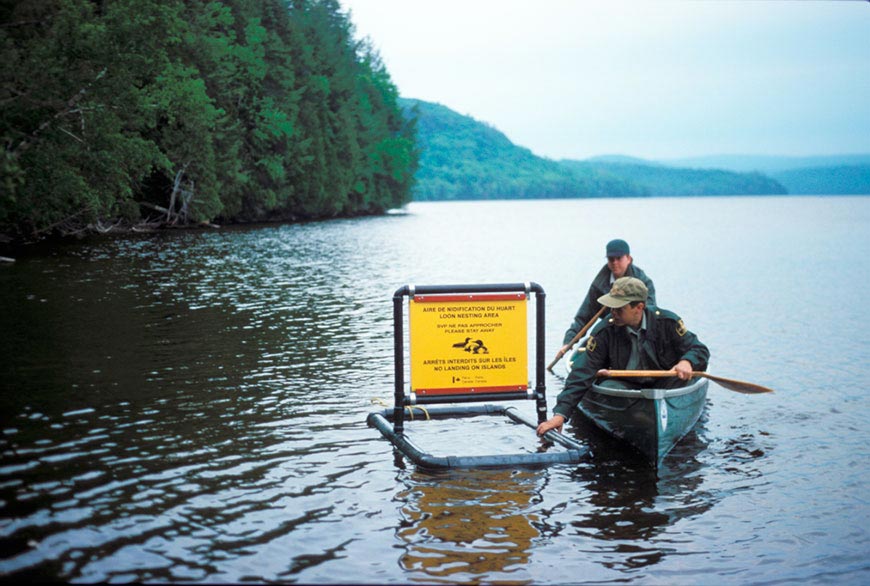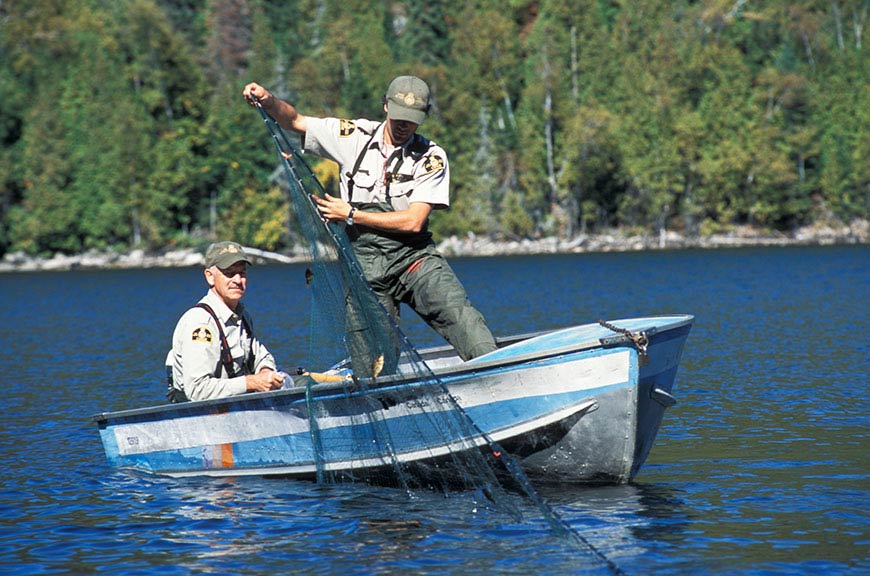
Conservation history
La Mauricie National Park
Conservation and protection over time
From initial inventories to major ecological restoration projects, the way we manage resources has evolved over time.
Here is a brief history of conservation at La Mauricie National Park from its creation in 1970 to the present day.
- 1970–1980: Discoveries and inventory
- 1980–1990: Pollution and awareness
- 1990–2010: From protection to restoration
- 2010 to present: Ecological integrity is the goal
1. 1970–1980: Discoveries and inventory

During the first few years of the park’s existence, significant inventory work was carried out to document biodiversity in the area. Park wardens explored the entire area and discovered the presence of wolves and wood turtles. However, they found that there were relatively few black bears and moose due to hunting and logging.
During this time, archaeological sites and artifacts were discovered that attested to the presence of First Nations on the land. The analysis of these artifacts suggested that First Nations were already present in the area between 3000 and 7000 BCE. All of this information about animal and plant life and human history will be important in the future.
In the meantime, history is being made...
2. 1980–1990: Pollution and awareness

The 1980s were significantly affected by acid rain associated with air pollution. In the park, the survival of the loons was jeopardized by mercury and acidification of lakes. Due to this situation, the loon protection program, which includes an educational and awareness-raising component, was quickly implemented.
It was also found that at one time the brook trout was the dominant species of fish; the other species were introduced by managers of private clubs before the park was created. In addition, a unique population was discovered in Arctic char territory in Français Lake.
In 1988, the National Parks Act was revised, and the concept of ecological integrity was introduced into the field of park management. The park now had to ensure that ecological integrity was maintained by protecting the species and ecosystems within the park, with the goal of keeping it in a condition comparable to what it was before the era of forest and wildlife resource development. But how could this be achieved?
In the meantime, history is being made...
3. 1990–2010: From protection to restoration

Park scientists and partners met in 1993 to reflect collectively on the concept of preserving ecological integrity. The necessary objectives and criteria were set to preserve the ecological integrity of ecosystems. Management strategies were reviewed, and needs related to researching and monitoring the park’s ecosystems were identified.
Various ecological restoration projects resulted from this process. These initiatives aimed to restore the ecological integrity of lakes and forests. An entirely new approach to managing resource conservation was implemented.
It also became clear that the park’s ecosystems extend far beyond its physical boundaries, meaning that collaboration with provincial and municipal partners is essential for the effective protection of species.
In the meantime, history is being made...
4. 2010 to present: Ecological integrity is the goal

A new approach has been implemented from coast to coast: ecological integrity monitoring. Since 2008, this program has monitored the condition of the park’s lakes, forests and wetlands. The goal is to assess their health and measure the effectiveness of actions put in place to maintain or improve ecological integrity.
Today, Parks Canada has implemented the Natural Heritage program. With support from its regional and First Nations partners, La Mauricie National Park is now more than ever encouraging measures to conserve species at the landscape level, not just within the park.
This new vision aims to protect species at risk and maintain the link between habitats and between ecological processes in the region’s ecosystems.
In the meantime, history is being made...
- Date modified :